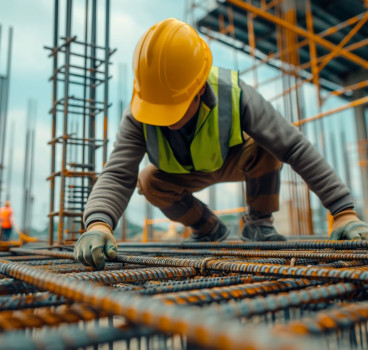Embracing gender diversity in construction
The construction industry is struggling with its image writes Jayne Hall. The media coverage of Grenfell and the collapse of Carillion are all negative stories which fuel a general outlook which is not good for the industry as a whole. Even a TV programme like Cowboy Builders paints a picture of an unattractive industry that hasn't got a grip on itself. Unfortunately that's what prevails in people's minds and it's a stereotypical perception.
It's hardly surprising then the industry's ever-widening skills shortage is getting worse. Modernisation should be the order of the day and with that it should be addressing what is sadly the worst gender balance of any industry. So how can we challenge the typical, often negative stereotypes of an industry where less than 14% of workers are women?
Dirty, dangerous and macho is the age-old, stereotypical image of construction and many women, even now, think that they will get wolf-whistled or ogled when they pass a building site. But that is not the reality; it's something that happens rarely. In fact, it hardly ever happens. Thankfully, the construction sector has moved on from this scenario and there are positive advances. There remains however a pressing need to do more to encourage gender diversity in the workplace, which in turn will make it more attractive.
As someone who champions inclusivity for CABE, I firmly believe the industry needs to sharpen up its image and make itself appear attractive to women and ethnic minorities. Despite construction being one of the largest employees in the UK, progress is slow. It needs to come across as more professional and dispel the myths of misogyny and glass ceilings. Of course this is much broader than construction - industries as a whole are reducing their talent pool.
Diversity is a key driver of innovation. A report on gender diversity by Mckinsey called Women Matter, suggests that the companies where women are most strongly represented at board or top management level are the same companies that perform best. The more diversity you have on a team, the more experienced and broader you are. Otherwise it is self-limiting.
At fifteen or sixteen years old young people are asked to choose options but the stereotypes discourage them. They don't want to be outnumbered and the only girl on a physics or technology course for example. Educational institutions need to address this imbalance to get true equality. Girls end up making unconscious assumptions but if you can engage them earlier to tackle these limiting and harmful gender stereotypes, it will encourage girls into the profession.
Sadly colleges don't do as much as they should to attract and encourage women on engineering courses. A young girl would have to encounter the uncomfortable situation of walking into a male dominated classroom. The lack of encouragement, and a curriculum that isn't inclusive as it should be, has meant we are damaging both the potential of women but also the potential of the economy as a whole. We need to show young women there is a career path at every level.
By fully understanding that diversity within the built environment is a contributing factor to the skills shortage and other issues, CABE plays an active role in reaching out to a diverse audience and ensuring we make the case for a truly inclusive built environment which caters for all.
With the 100th anniversary of women having the vote, gender equality and diversity is high on the agenda. The engineering profession as a whole is making progress on gender and inclusivity with many women, like myself, who have forged happy and successful careers in engineering. It's a great industry to be part of. Tackling gender diversity will widen the talent pipeline, improve the image of the sector and will go some way to tackling the skills shortage.
Visit:www.cbuilde.com.
About the author: Jayne Hall is Building Control and Planning Enforcement Manager for South Gloucestershire Council
Check out similar blogs on Talk.Build
https://talk.build/news/foundations-in-place-for-a-competence-led-built-environment
https://talk.build/blogs/looking-beyond-fire-safety
https://talk.build/blogs/fire-insulation-and-climate-change-the-challenges
https://talk.build/blogs/now-is-the-time-to-review-fire-related-building-regulations
https://talk.build/blogs/building-safety-act-what-to-look-out-for
Additional Blogs

What the UK can learn from global construction tech leaders
The UK construction sector stands at a critical crossroads. Mounting pressures - stagnant productivity, acute labour shortages, tightening safety requirements, ambitious carbon-reduction targets and...
Read moreAre architects losing their influence in the digital era?
For decades, architects have been the central creative force in construction, shaping the buildings we see and the way projects are conceived, communicated and delivered. Their role has been...
Read more

Why the word “Innovation” has lost its meaning in construction
“Innovation” has become one of the most overused terms in construction. It appears in the dozens of press releases we receive each day, conference talks and project reports, often without any real...
Read more